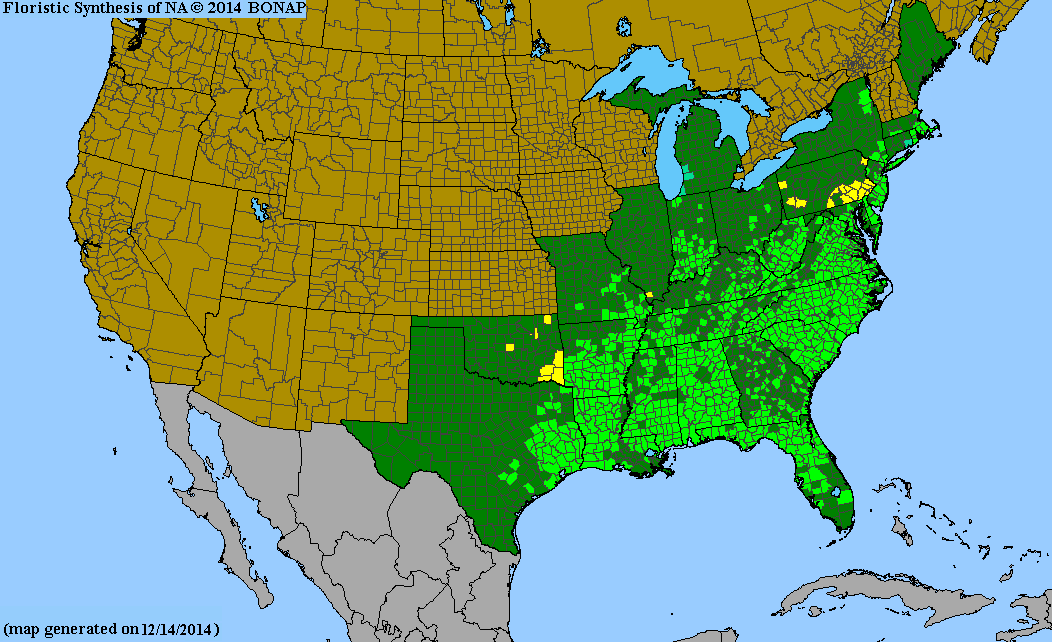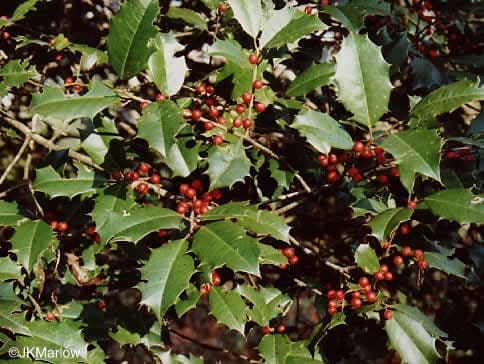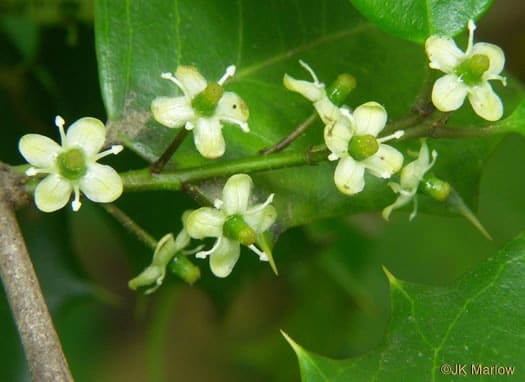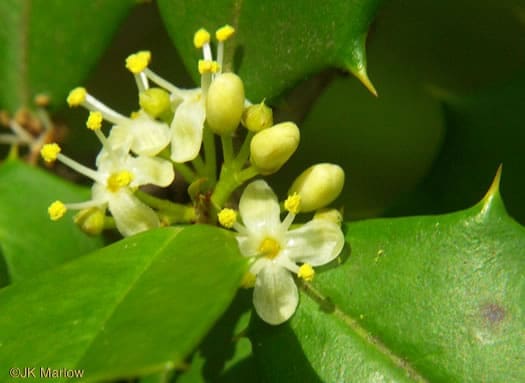Aquifoliaceae
American holly
Ilex opaca
Synonyms
Ageria opaca
Ilex aquifolium var. opaca
Other Common Names
inkberry, winterberry
Plant Type
Large Tree (greater than 25 ft)
Typical Size
40-60 ft. tall
10-20 ft. wide
Tolerant of
Deer
Inolerant of
Poorly Drained Soil
Propagation
By seed, By cutting
Plant Propagation Notes
Plant seeds immediately after collection for best germination. Scarification or double-stratification may be implemented but seeds may not germinate until internal conditions are optimum, which could be years. It will take 5-12 years before the sex of seedlings can be determined. May also be propagated from semi-hardwood cuttings.
Plant Planting Notes
American holly grows best in moist, neutral to acidic soils, in full sun to partial shade. Flooding is not tolerated. Excess shade will decrease foliage density.
Plants/Diseases
Black root rot and Phytophthora root rot can be problematic, especially in stressed trees.
Wildlife Benefits
Nectar/pollen source for pollinating insects, Host plant for butterfly larvae, Fruit/seeds for birds
Leaves
Leaves are alternate, simple, oblong to elliptic, coriaceous, and have an apical spine.
Flowers
Male trees produce axillary clusters of 3-12 male flowers on peduncles about 1″ long. Individual flowers are about 1/4″ in diameter and consist of a short green calyx with 4 lobes, 4 greenish-white petals, and 4 stamens. Flowers of female trees may appear individually or in groups of 2-3. Individual female flowers are about 1/4″ in diameter and consist of a short green calyx with 4 loves, 4 greenish-white petals, 4 infertile residual stamens, and a green pistil. The peduncle and pedicels of the flowers are green and either hairless or sparsely pubescent.
Fruit
Fertile female flowers are replaced by drupes that mature in the fall. When mature, fruits are about 1/3″ in diameter and bright red or occasional orange-red.
Bark
Bark is a light gray and smooth but may be splotched with red or tan lichens or warty.
Toxicity
All Ilex species are somewhat toxic if ingested. Individual sensitivity varies.

USDA Hardiness Zones
5, 6, 7, 8, 9
Light Exposure
Full Sun, Part Sun/Shade
Soil Moisture
Medium, Moist
Soil Drainage
Well-drained
Soil pH
Acidic (less than 6.0), Neutral (6.0-8.0)
Native in South Carolina?
Yes
Plant Native Habitat
American holly is found in a wide variety of forests, ranging from xeric to wetland.
Global Conservation Status (NatureServe)
Secure (G5)
Federal Conservation Status (USFWS)
Not Listed
Distribution Notes
Within South Carolina, American holly is common in the Mountains, common in the Piedmont, and common in the Coastal Plain.



